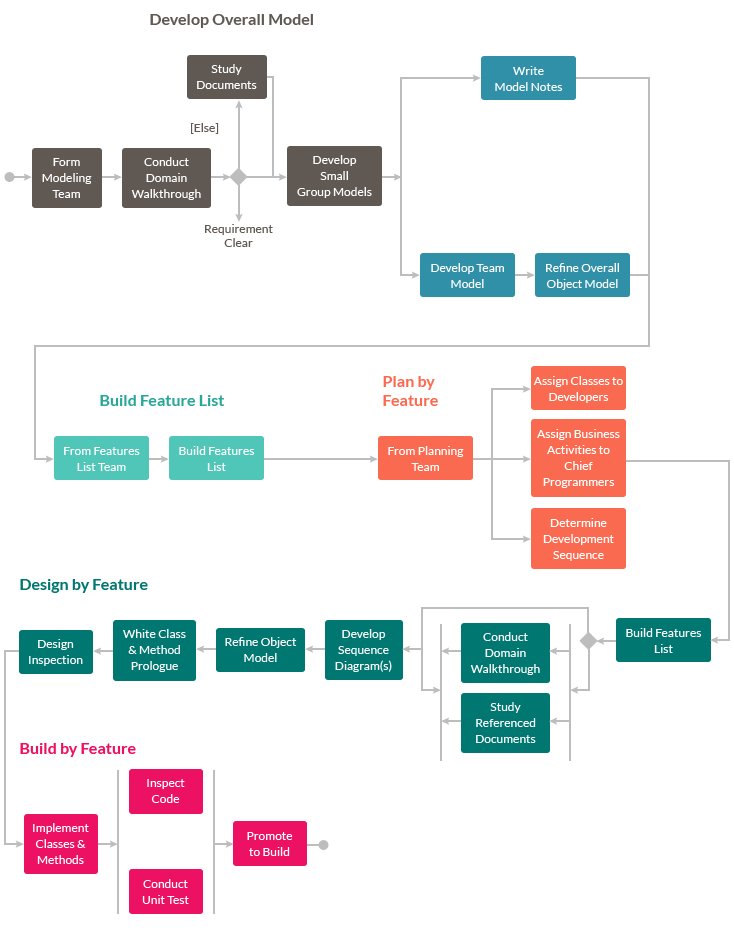Top 12 Software Development Methodologies & Its Advantages & Disadvantages

Will you like to add more structure to your workflow? Choosing the best approach for your software creation depends in large part on the scale, priorities, and other considerations of your team.
Play a key role in app development.
For day-to-day activities, custom software engineers use various methodologies. Each of them has some benefits and drawbacks. The central goal of these methodologies is the seamless production of applications in compliance with project specifications.
The architecture philosophy of applications is a mechanism for structuring, planning, and monitoring information technology development processes. This software development process is concerned only by the fact that there are no technological elements to it but that it needs careful preparation for the lifetime of the software development.
Below are the 12 most used methodologies for app creation with their Advantages:
- Agile methodology for developing software
- Methodology for DevOps
- Methodology for Scrum Growth
- Model Waterfall
- Methodology of prototype
- Development Feature Driven
- Rapid Application Development (RAD)
- Model of the spiral
- Methodology for Dynamic Systems Development
- Extreme methodology for programming
- Methodology for popular application creation
- Methodology of Lean Development
1. Agile methodology for developing software

Agile software development is a disciplined software management approach that allows for regular changes to the development project. Agile software development. This is a software approach that is a methodological basis for different software engineering initiatives. It is utilized to reduce risk by producing apps that normally last one week to one month in short time boxes.
Agile Development Methodology advantages:
- fast and ongoing distribution of applications to customers.
- Instead of systems and resources, individuals and contact are emphasized.
- Constant interaction with customers, developers, and testers occur.
- An adaptive approach is employed for an agile methodology that meets the changing consumer needs.
- There is no need for guesswork in the mechanism for direct contact and continuous input from customer representatives.
Disadvantages of Agile Development Methodology:
- It is difficult to determine the commitment needed at the beginning of the software development life cycle for certain software deliverables, particularly big ones.
- This approach concentrates not on documents but running applications, so there might be a shortage of documentation.
- If the consumer contact isn’t sure what end product they desire, the project will quickly be withdrawn.
- Only senior programmers will make the necessary decisions during the production process.
- It, therefore, has nothing more than an accomplished resource for newbie programmers.
2. Methodology for DevOps

DevOps is a common concept which gets a lot of attention as its customers profit unconditionally. Development and operations are not siloed in the same way as the start of DevOps. All teams act as a single unit with all operations in the life cycle. It operates with both companies simultaneously. The ongoing convergence and continuous delivery model enables developing and operating teams to do everything of growth, quality assurance, safety, and other activities in a parallel way.
Companies are moving now more to DevOps as an agile, lean method of operating closely together through all phases of the period of growth.
DevOps benefits
- Faster Process: Multiple continuing procedures concurrently run, making time for companies to process the process quicker and simpler. By responding to industry trends, DevOps allows companies to quickly expand and produce those business outcomes.
- Offers Rapid Deliveries: Microservices and on-going delivery are some DevOps elements that quickly provide business continuity and updates. DevOps helps organizations to actively innovate and enhance software products.
- Reliability: The established products are durable and healthy with increasing improvements in products and facilities with a comparative edge over all peers.
- Collaboration: This is a joint forum focused on strong obligations and ownership criteria. To produce more fast and successful goods, production teams and operating teams are in line with each software lifecycle activity.
DevOps Disadvantages
- DevOps demands Cultural change: Yes, if you take DevOps into your enterprise, it requires cultural transformation and the business needs to reinvent its processes to expand effectively.
- Organizational Upgradation is another vital part of upgrading businesses from traditional approaches to multidisciplinary activities that enable them to use multiple skills simultaneously.
- Speed and security are not all that DevOps often achieve. In certain sensitive ventures, you will encounter organizations that cannot guarantee all of them at a single level, and at each stage of your DevOps process, you will need to consider a different security strategy.
3. Methodology for Scrum Growth

You can apply the Scrum Development Methodology In almost all project forms. We use this form of development approach for businesses with highly evolving demands and fast improvements that are quickly met. A quick preparation, briefing, and final analysis begin with the software development model Scrum. Businesses will speed up app creation using this approach, which enables several implementations in one go. It’s an excellent approach so even the slowest programs are quickly monitored.
Advantages of Scrum Development:
- Using Scrum Production with fast going, advanced developments, fast codes, and quickly correctable test errors.
- Decisionmaking is completely in the hands of the departments in this methodology.
- The approach allows projects with reports of company conditions and other signs that help to achieve progress.
- The project planning steps visible in this system can be managed by companies with empathies on regular updates.
- The creator can effectively assess individual efficiency in a regular meeting. This contributes to the increase of each team member’s productivity.
- Becoming easier to deal with transitions due to fast sprints and continuing reviews.
- A premium commodity can be supplied more easily on a budget.
Disadvantages of Scrum Development:
- As Agile Scrum is one of the major reasons for the spectrum crunch, no specific end date exists, project managers would be inclined to continue to demand additional features.
- If this type of planning model is not compromised, the projected project costs and time should be kept correct.
- It is suitable for small, quickly moving projects, but not for big projects.
- Experienced team members only require this technique. If the team consists of individuals who are novices, the job cannot be finished within an exact time period.
- When the Scrum Master respects the squad it manages, Scrum performs best with project management. If they exercise very tight supervision of the team members, it can be incredibly difficult for them, leading to demoralization and the collapse of the project.
- It is impossible to execute and calculate the project quality manager until the test team will run regression checks after each sprint.
4. Model Waterfall

The Waterfall model is one of the most basic and popular ways to design applications. Most companies see this paradigm as a classic way of developing apps. In a linear sequence flow, this model explains the software development process. You should always ensure that the earlier process is complete in every step of the production cycle. This development strategy would not specify the mechanism for managing improvements in specifications back to the previous level.
Advantages of the Waterfall Model:
- The model of the waterfall is very basic and easy to understand. It is also useful to the new developer or beginner.
- The rigidity of the model makes it easier to handle the tasks. Besides, each step has unique results and a single analysis process.
- In all the steps processed and done at a given time, the model saves considerable time.
- In this type of development model, the specifications are well understood/defined. It also functions with smaller programs efficiently.
- Checking referred to in the earlier practical specification can be done quickly.
Disadvantages of Waterfall Model:
- This model can only be used where the specifications are correct and upfront usable.
- This model would not apply to programs with ongoing maintenance.
- The biggest downside of this approach is that after a program is tested it is unacceptable to go in and make any improvements to the finished applications and there will be a lot of difficulties.
- We will not produce working applications until the last stage of the loop is reached.
- The important input of the customer cannot be used in the continuous growth process.
- There is no way to know the outcome of the whole project in this model.
- Make the expectations simple and clearly specified or this model is not appropriate. For long and continuous projects, it is reliable.
- Documentation takes time for developers and testers with this model.
5. Methodology of prototype

The Prototype Methodology is the developer software process that requires developers to only build a prototype to show to the customers how it works. Use this technique to make the possible changes before designing the final application. This software development approach is ideally characterized by solving a variety of problems that often arise from a conventional waterfall paradigm.
Advantages of Prototype Model:
- Show the Client’s prototype such that the software’s interface is well understood and felt. It guarantees greater value and security for customers.
- Identify the extent of the refinement and adjust the updated specifications accordingly.
- Reduce the chance of loss with this approach significantly and recognize possible hazards early on and measurements can be made easily.
- Communication between the software development team and the user makes the experience during a project exceptionally good and favorable.
- It assists in the collection and interpretation of requirements when records are lacking.
Disadvantages of Prototype Model:
- Prototyping is normally performed at the developer’s expense so that the production costs of the organization can be excessive with insufficient funding, otherwise.
- Often customers seek delivery of the true product shortly after an early version has been used.
- Customers are so involved, not necessarily by the product provider.
- The team does not appreciate so much change as it quickly disturbs the current workflow of the whole phase of software creation.
- After seeing the original version, consumers could not be pleased or involved in the product.
6. Development Feature Driven

Feature-driven development is an iterative approach designed for large teams to use object-oriented programming in a project. feature-driven development. This model is useful for organizations that move from process to iterative strategy, a technique often known as an FDD methodology. This model is good.
Advantages of FDD Methodology:
- In this model, an oriented approach to the progress monitoring of the project takes place.
- Multiple teams will function at the same time. That reduces time, on the other hand.
- FDD Assists in moving bigger programs and achieving repeated results.
- The five basic processes contribute to function quickly and easily.
- This model is based on software development industry guidelines such that it helps with quick development and accepted best practices in the industry.
Disadvantages of FDD Methodology:
- It is not an appropriate technique for smaller projects so that a software developer is not successful.
- High dependence on a key developer ensures that an act as an organizer, lead designer, and trainer should be professionally prepared.
- In this process, customers are not given written documents so that evidence of their software can’t be obtained.
7. Rapid Application Development (RAD)

Rapid Application Development (RAD) is an innovative way of developing and producing results that are much faster than most software development methodologies. It is designed such that the full gain of software creation is quickly accomplished. The key aim of this approach is to speed up the whole production phase of apps. The target can be effectively achieved by actively including users in the implementation process.
Advantages of the RAD model:
- The rapid development model of the application allows the product developer to minimize the risk and efforts required.
- This model also allows consumers to do fast project evaluations.
- This approach supports user reviews, which often offers scope for enhancing every tech project.
- As a consequence, there are minor defects due to prototyping in nature.
- Each stage of RAD offers the customer the highest priority.
Disadvantages RAD model:
- The model relies on a solid team and individual achievements to better define the company’s exact needs.
- This approach operates only on structures that can be modularized.
- This solution requires highly qualified designers and a team of designers that are not feasible for each company.
- This approach cannot be used in small-budget projects by the creator because modeling and the automated development of code are incredibly expensive.
- Progress and familiar issues are impossible to trace when no paperwork indicates what was done.
8. Model of the spiral

A sophisticated approach focusing on early discovery and project risk avoidance, the Spiral Model. This approach for the implementation of apps examines the risks associated with the project and then plans on how to manage the risks. Eventually, engineers decide whether they want to move the next phase to the next iteration of the curve. The performance of a model Spiral Lifecycle depends on the reliability, care, and competence of the project management.
Advantages of Spiral Model:
- This model undoubtedly decreases the vast number of risk analyses carried out thereby, avoiding the potential risk.
- This model is ideal for large and vital programs.
- Additional features will be applied to the spiral model at a later date.
- Development is fast and features in this model are systematically introduced.
- It is more suitable for high-risk programs where corporate requirements will vary on occasion.
Disadvantages of Spiral Model:
- In terms of growth, it is definitely an expensive model to use.
- The progress of the whole project depends on the risk appraisal process, which could lead to harm to the whole project if this stage fails.
- For low-risk programs, this is not acceptable.
- It can go indefinitely and never end, and the main danger of this approach is.
- The recording of intermediate phases is more significant.
9. Methodology for Dynamic Systems Development

The software development approach was initially focused on rapid application development methods. The dynamic systems development model is a software development model. This approach is iterative and gradual, emphasizing the continued participation of the individual. Its primary objective is to provide timely and budgetary information systems. This paradigm only runs on the philosophy that in the first attempt nothing is fully formed and calls it a mechanism that changes.
Advantages of Dynamic Systems Development Model:
- Users play a significant role in the development of the framework, so the software development project is more likely to be managed.
- This model provides a simple basic functionality, with more functionality at regular intervals.
- This approach allows developers to reach end-users easily.
- Projects of approach are completed on schedule and under a certain budget during this type of production.
Disadvantages of Dynamic Systems Development Model:
- The first thing is the implementation of DSDM is expensive since both consumers and developers need the training to use it efficiently. It may not be appropriate for small or one-off projects.
- It is also not very common or easy to comprehend. This is a relatively recent model.
- This model requires considerable user participation.
- This model involves gradual requirement growth.
10. Extreme methodology for programming

Extreme Programming is an agile framework for software engineering. This technique, shortly called the XP methodology, is used primarily to build applications in a very fragile environment. The modeling process requires greater flexibility. This XP model’s primary aim is to reduce computing costs. In the XP model, it is very common for later stages of the project to cost very large changes to the specifications.
Advantages of Extreme Programming Methodology:
- This approach helps developers to save money and time needed to realize projects is the key benefit of Extreme Programming. There is time-saving because XP is focused on delivering finished goods in due course. Extreme programming teams save money so they don’t have so much paperwork at their disposal. They generally solve problems by communicating inside the squad.
- Extreme methodologies in programming stress consumer participation.
- This model tends to build logical schedules and developers dedicate themselves to the timetables that definitely constitute a significant benefit in the XP model.
- This model relates to the most recent methods of creation such that developers may generate better software.
Disadvantages of Extreme Programming Methodology:
- Some experts believe Extreme Programme, rather than architecture, is based on the code. This could be a challenge, but software programs have incredibly good architecture. It leads to the selling of software in the industry. Furthermore, fault reporting is not always good for XP programs. Failure to log the defects can in the future lead to similar bugs.
- Only as successfully as the people concerned in this process, Agile can not solve this dilemma.
- This type of software development model involves regular meetings at a huge cost to clients.
- Too many implementation modifications are needed that are impossible for the software development company to implement at any moment.
- Under this approach, precise figures of the effort required for an assessment are not known since no one knows the full scope and conditions of the project at the outset of the project.
11. Methodology for popular application creation

Joint Application Development (JAD)JAD is a requirement-definition and user-interface approach for the implementation of information applications, which enables end-users, customers, and engineers to attend intensive on-site sessions. This approach is designed to engage the customer in developing and designing an application. JAD sessions quickly achieve several joint seminars with aim objectives. The emphasis of this model is not on technical aspects but on solving the issue of industry. It is also ideally suited for the production of business systems.
Advantages JAD Methodology:
- This technique enables vast quantities of knowledge to be collected and consolidated simultaneously. Acting with the company and its customers reduces all costs.
- In a quick period of time, high-quality knowledge can be produced effectively in this style of software production. It lowers project construction costs and time.
- The variations in this approach are overcome automatically with the correct support of the coordinator.
- This model offers a platform for exploring several perspectives on a topic.
- Well-defined device consistency specifications are enhanced.
Disadvantages of JAD Methodology:
- The JAD approach takes a long time because the project implementation team needs much preparation and a planning committee.
- In terms of time and resources, it needs substantial investor engagement.
- For the successful execution of the whole project, this strategy demands skilled, professional professionals.
- Different viewpoints within the team find it challenging to share priorities and stay focused.
12. Methodology of Lean Development

The lean Programming Approach focuses on the development of software that is quickly modified. The development style of this software is more strategically based than most agile approaches. This approach aims to produce applications with a small budget and a significantly lower level of the workflow at one-third of the time.
Advantages of Lean Development Methodology:
- With the rapid removal of the total effectiveness of the implementation pace, the process of software development is definitely accelerated, which certainly decreases the expense of the project.
- It is certainly a benefit to deliver the product early. This ensures that in a shorter time span the production team will have more features such that more tasks are carried out.
- The production team’s empowerment leads to the development of team members’ decisions that have generated more motivation for team members.
Disadvantages of Lean Development Methodology:
- The success in the implementation of software relies on the discipline and the technical expertise of the team members.
- The position of a company analyst is essential to ensure a proper understanding of the market demands documentation. If every corporation has no employee with the right business analyst, this approach will not be beneficial.
- In this development model, the developer is granted tremendous freedom, which is sure to be wonderful, but too much of it will contribute easily to a development team that has little emphasis on its original goals.
Conclusion
The above methodologies are very important for the production of applications and are used mainly for different software projects. Also, in some projects, all these methodologies perform well, depending on the type of the project. Sometimes, a technique suitable for a specific project could not be suitable for another project. Besides, none of these methods are stupid, because each has its advantages and disadvantages. So, before choosing one such implementation approach for their software development programs, software developers must provide knowledge on all these methodologies. A specialist web development firm should be consulted for improved performance.




